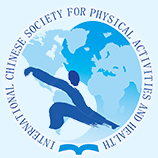Document Type
Abstract
Keywords
Canoe slalom, fitness diagnosis, 2020 Tokyo Olympics, training plan
Publication Date
8-1-2022
Abstract
Research showed that aerobic metabolism is one of the main energy supply for slalom athletes in training and competition (Jan Busta et al., 2018). To assist canoe slalom players improving their performance, it would be beneficial to examine the top canoe slalom athletes’ physical fitness status and their training protocols. By comparing the difference of the fitness status and training protocols, we may develop an optimal training protocol to improve the athletes’ physical fitness and their performance. In this study, the world top athletes and Chinese elite players’ fitness status was compared. The goal was to help Chinese players to reach the top level in world competitions. Fifteen elite canoe slalom players were recruited from the Chinese national team (age: 21 ± 2 years; 3 female and12 male elite athletes). The fitness tests included bench push and bench pull for maximum strength(1RM) and endurance strength (40%1RM for 120 seconds). 300-meter speed race in flat water was used as a comparison indicator of athlete's basic paddling speed ability, owing to the courses of slalom races differ. The physiology tests were VO2max, heart rate (HR) and blood lactate (BLA). All the data were collected during the winter training session in 2016. The HSIRB approved the data collection procedures. Descriptive statistics were calculated and analyzed using SPSS 25. The comparisons were made between Chinese elite athletes and world top athletes. For theVO2max/kg, the results showed that the Chinese elite canoe slalom female players (50.8 ± 2.19 ml/kg/min) fell 0.68 standard deviation (SD) lower than the world top level while males (56.03 ± 2.95ml/kg/min) fell 0.70SD lower. The maximum strength of bench push were 96 ± 4.1kg (female)and 125 ± 15.3kg (male). The bench pullwere81 ± 1.4kg (female) and 110 ± 5.8kg (male). The endurance strength repetition results of bench push were 91.3 ± 14.3 (female) and 80.8 ± 7.2 (male), the bench pull were 87 ± 6.7 (female) and 83.3 ± 7.6 (male). The result of 300-meter speed race in flat water showed that the Chinese male kayakers (100.1 ± 0.3s) was significantly slower than international male kayakers (88.1 ± 7.7s) (t = 1.56, p = 0.0594). Chinese male kayakers’ heart rate (170 ± 3 bpm, tested immediately) was slower and lactic acid level (15.4 ± 1.4 mmol/L, tested 3 minutes after) was higher, comparing with the world top kayakers. Chinese elite players’ aerobic metabolism, strength and speed statistically fell behind of world top players in canoe slalom. In order to be competitive at the world top level race (e.g., 202 Tokyo Olympics), the Chinese elite canoe slalom players may need to add more proportion of aerobic training, endurance strength and speed training.
DOI
https://doi.org/10.18122/ijpah.1.2.19.boisestate
Recommended Citation
Gao, Ping; Wei, Ran; and Liu, Yuanlong
(2022)
"Examining Physical Fitness and Training Strategies for Chinese Elite Canoe Slalom Players,"
International Journal of Physical Activity and Health: Vol. 1:
Iss.
2, Article 19.
DOI: https://doi.org/10.18122/ijpah.1.2.19.boisestate
Available at:
https://scholarworks.boisestate.edu/ijpah/vol1/iss2/19
Included in
Exercise Science Commons, Health and Physical Education Commons, Public Health Commons, Sports Studies Commons


